 |
 |
 |
| |
Doxycycline PrEP prevents STIs without affecting vaginal
bacterial flora in female sex workers in Tokyo
|
| |
| |
AIDS 2024 23 July
S. Abe1, D. Shiojiri2, A. Kawashima1, H. Uemura1, N. Ando1, D. Mizushima1, H. Gatanaga1, S. Oka1
Institutions
1National Center for Global Health and Medicine, Tokyo, Japan, 2Personal Health Clinic, Tokyo, Japan
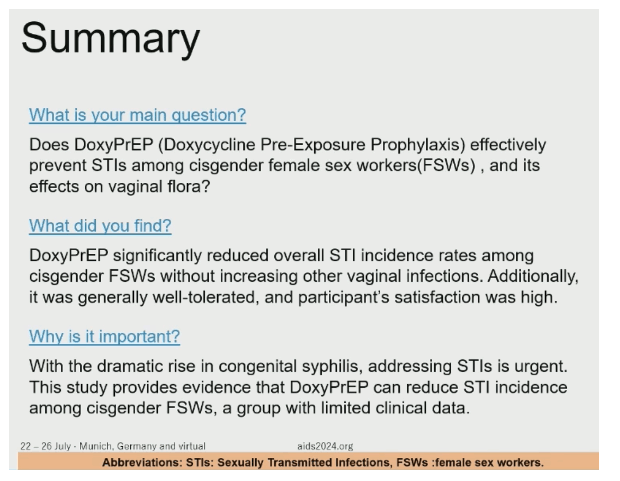
abstract
BACKGROUND: The efficacy and potential harm of Doxycycline prophylaxis in women remain controversial. We investigated the impact of Doxycycline Pre-exposure Prophylaxis (DoxyPrEP) on reducing sexually transmitted infections (STIs) and its effect on the vaginal microbiome in female sex workers(FSWs).
METHODS: Daily doxycycline (100mg) was initiated in October 2022 at a private STI clinic in Tokyo, based on shared decision-making. This analysis comprised a retrospective cohort study and a survey. Targeted STIs included Chlamydia trachomatis, Neisseria gonorrhoeae, and Syphilis. Routine clinical practice involved microscopic examination of vaginal smears every 1-3 months to monitor the vaginal microbiome. We compared incidence rates (per 100 person-years) before and during DoxyPrEP, using Incidence Rate Ratios (IRRs) with conditional fixed-effects Poisson regression. Perturbations of the vaginal microbiome, defined by microscopic abnormalities and antimicrobial treatment, were also examined. Adherence to the regimen, adverse events, and user satisfaction were monitored through surveys.
RESULTS: Forty FSWs with a median age of 29 years (interquartile range 26-33.5) were analyzed. Before DoxyPrEP, the overall STI incidence rate was 232.3 per 100 person-years. After initiating DoxyPrEP, the overall STI incidence rate declined to 79.2 per 100 person-years. There was a significant reduction in overall STIs (IRR=0.33, P=0.020) and a marginally significant reduction in Chlamydia trachomatis (IRR=0.35, P=0.056). The incidence of syphilis was reduced to zero. However, there was no significant change in Neisseria gonorrhoeae (IRR=0.45, p=0.136). Incidences of bacterial vaginosis and Candida vaginitis did not significantly increase (IRR=1.19, P=0.499 and IRR=1.52, P=0.358, respectively). Of the 40 participants, 22 completed surveys, almost all participants adhered strictly to DoxyPrEP. No severe doxycycline-related adverse events were reported. Condom use remained constant in 95.4% of participants. Regarding satisfaction, 72.7% of participants reported reduced anxiety about acquiring STIs.
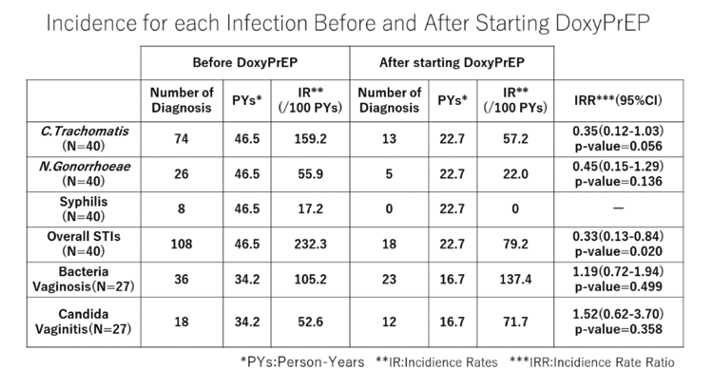
CONCLUSIONS: DoxyPrEP significantly reduced STI rates in FSWs without significantly increasing other vaginal infections. This supports the introduction of DoxyPrEP in high-risk populations.


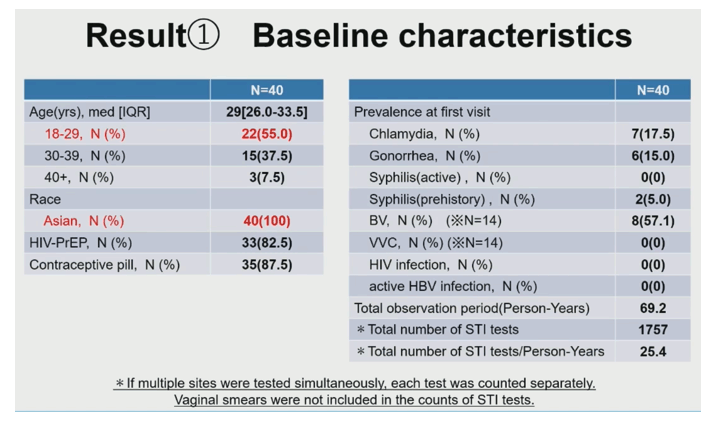
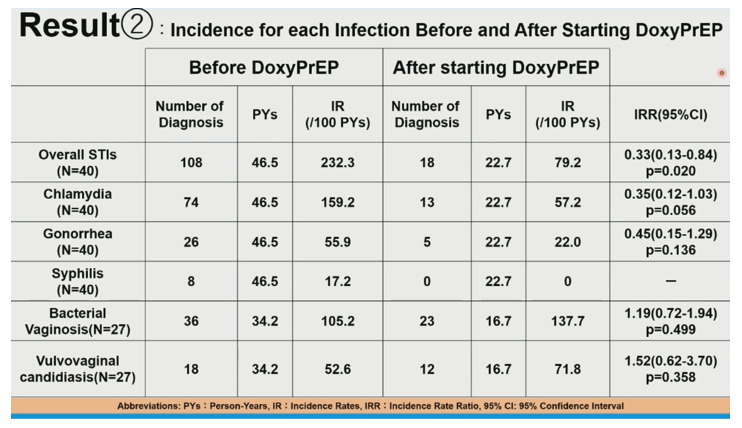
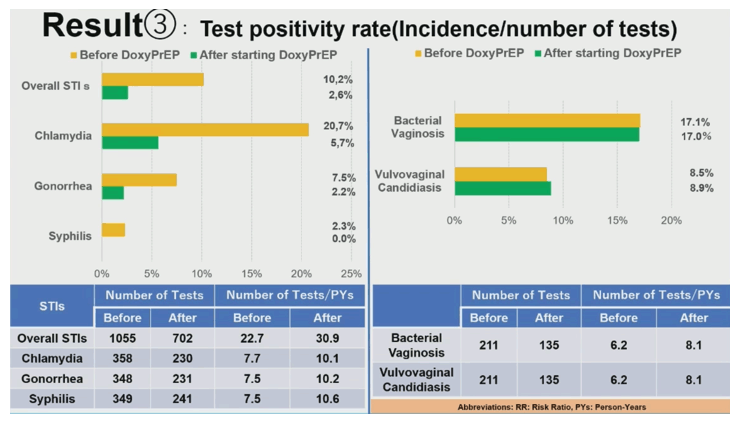
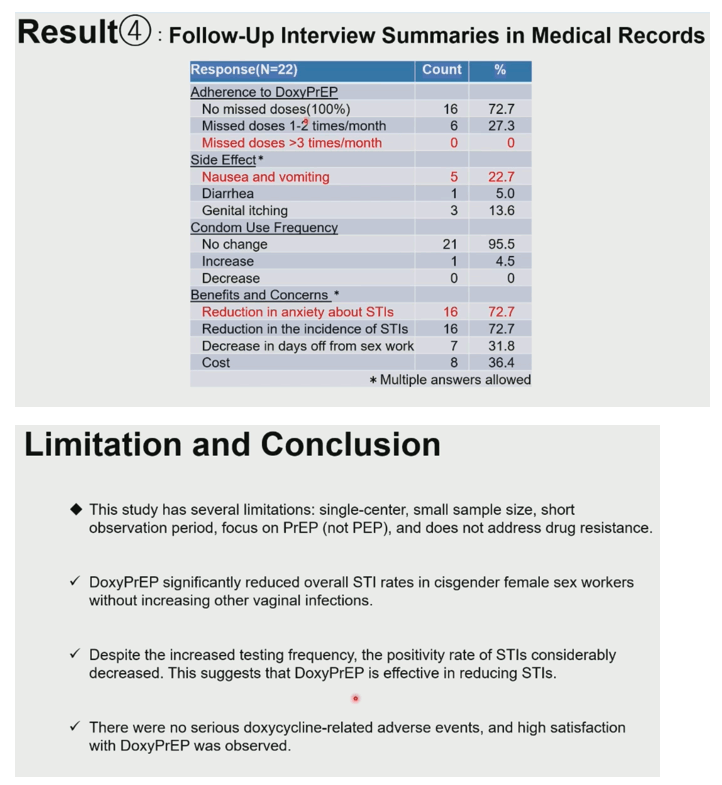
|
| |
|
 |
 |
|
|